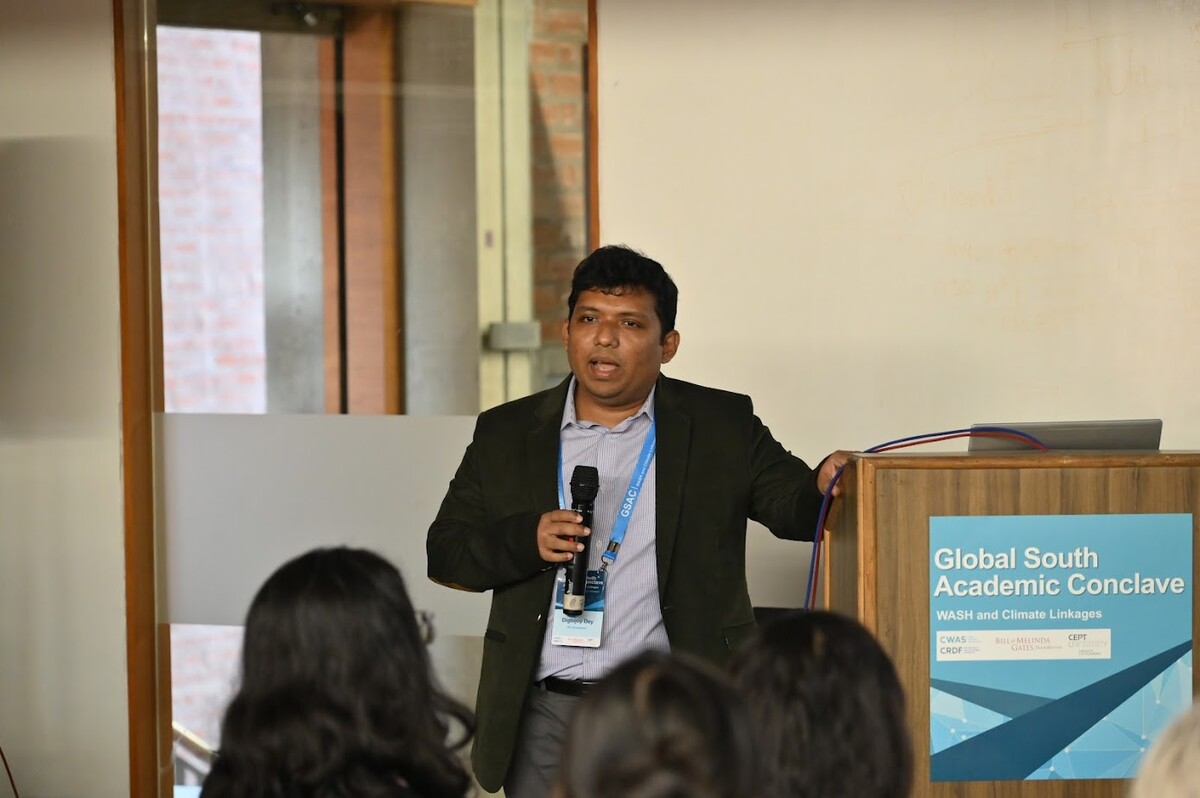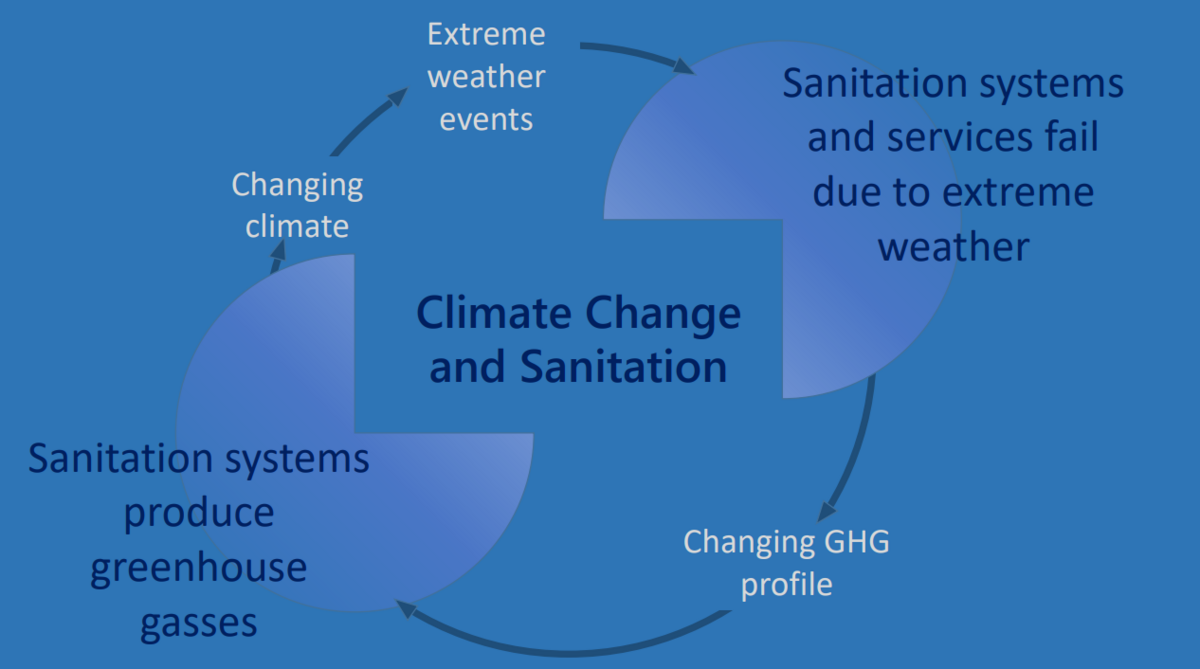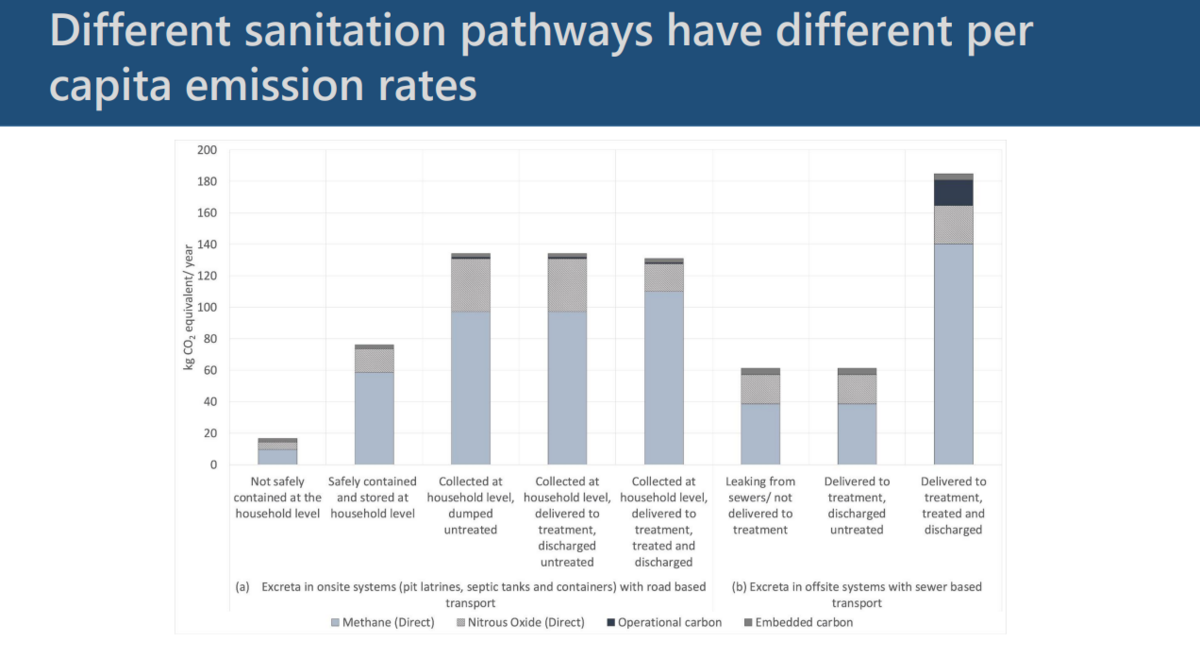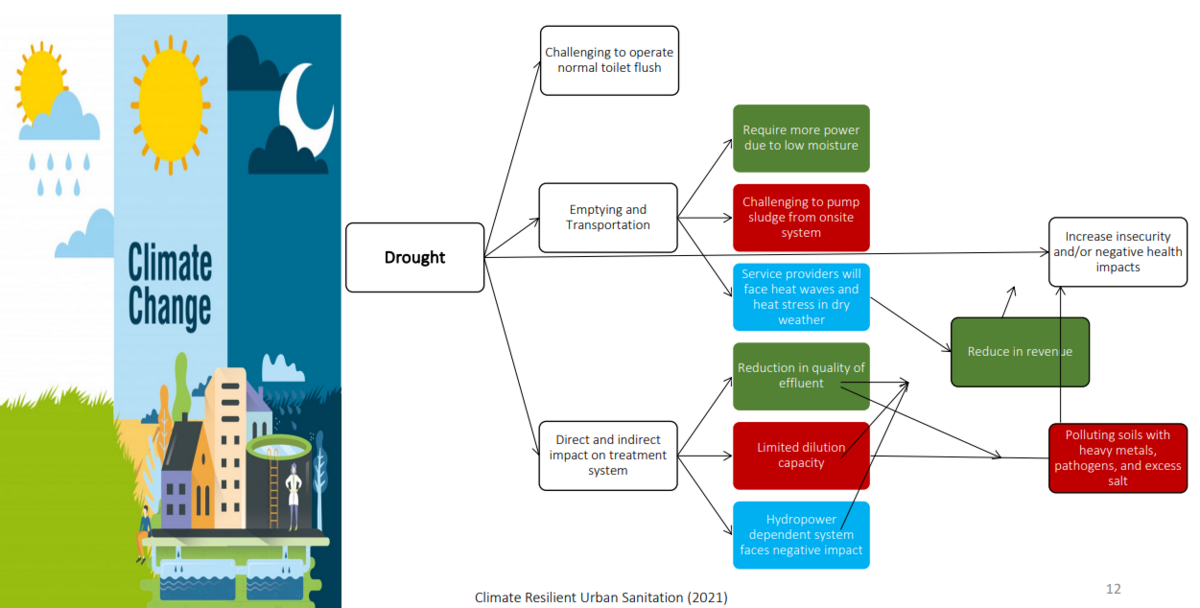Lessons for the Global South
Published on: 04/03/2024

Digbijoy Dey, IRC at GSAC on WASH and Climate linkages. Credit: CEPT University
Few events focus on WASH and climate change in the least developed countries (LDCs). And while they have contributed the least to climate change, we all know that LDCs often suffer the most from its impacts. That’s why the 'Global South Academic Conclave on WASH and Climate linkages', hosted by Ahmedabad’s CEPT University in India at the beginning of February 2024, seemed like an event I couldn’t afford to miss.
Three keynote presentations at the Conclave drew my interest. What do they tell us and what connects them?
First up was Professor Barbara Evans of Leeds University with her keynote titled 'The Climate and Sanitation Puzzle'. As illustrated below in fig.1, she discussed how sanitation systems both create and are affected by greenhouse gas emissions.

Fig 1: Climate change and sanitation - slide from Prof. Barbara Evans' presentation "The Climate and Sanitation Puzzle". Credit: Leeds University/Barbara Evans
Prof. Evans found that safely managed on-site sanitation produces slightly less greenhouse gas emissions than sewer-based sanitation, while discharging excreta unsafely minimises emissions the most (see fig. 2). Since unsafe disposal is not an option, we must consider safe alternatives. These include twin-pit latrines in rural areas, which produce sludge than can be safely re-used on-site. Another option is solid-liquid separation of sludge in septic tanks to treat separated liquid on-site before discharge, which is what the WASH Institute's Mobile Septage Treatment Unit (MTU) does.

Fig 2: Sanitation pathway emission rates - slide from Prof. Barbara Evans' presentation "The Climate and Sanitation Puzzle". Credit: Leeds University/Barbara Evans
In the second keynote Professor Juliet Willet of the University of Technology Sydney (UTS) spoke about risk and resilience. She explained how climate change and its impact can be assessed, and from there how to make WASH technologies and services climate resilient. We must keep in mind, however, that climate resilient design and operation features will add to the already considerable costs of achieving safely managed sanitation services as defined by the WHO/UNICEF JMP.
Professor Thammarat Koottatep from the Asian Institute of Technology presented a case study on the costs of making systems climate resilient in his keynote on the impact of climate change on rapidly urbanising sanitation systems. His case study of the Thongthawil Service Company in Thailand showed that a profitable faecal sludge management business model may not be sustainable and efficient. Conversely, if it is made sustainable and efficient, it may compromise profitability.

Fig. 3. Impact of climate change on urban sanitation - slide from Prof. Thammarat Koottatep's presentation "Climate Risks and Sanitation Challenges". Credit: AIT/Thammarat Koottatep
What all three keynotes have in common is that they examine the relationship between climate change and sanitation services. With a business as usual model, many countries will struggle to provide safely-managed sanitation services. And making these services climate resilient is even more difficult. One option is to choose a gradual approach. This means first transforming sanitation into a functional service. Then step by step, making it safely managed and climate resilient. Each intermediary step can open avenues to adopt, adapt and upgrade, attract policy makers, bring in finance and most importantly, inspire users to demand a better service.
At IRC we have strong opinions and we value honest and frank discussion, so you won't be surprised to hear that not all the opinions on this site represent our official policy.